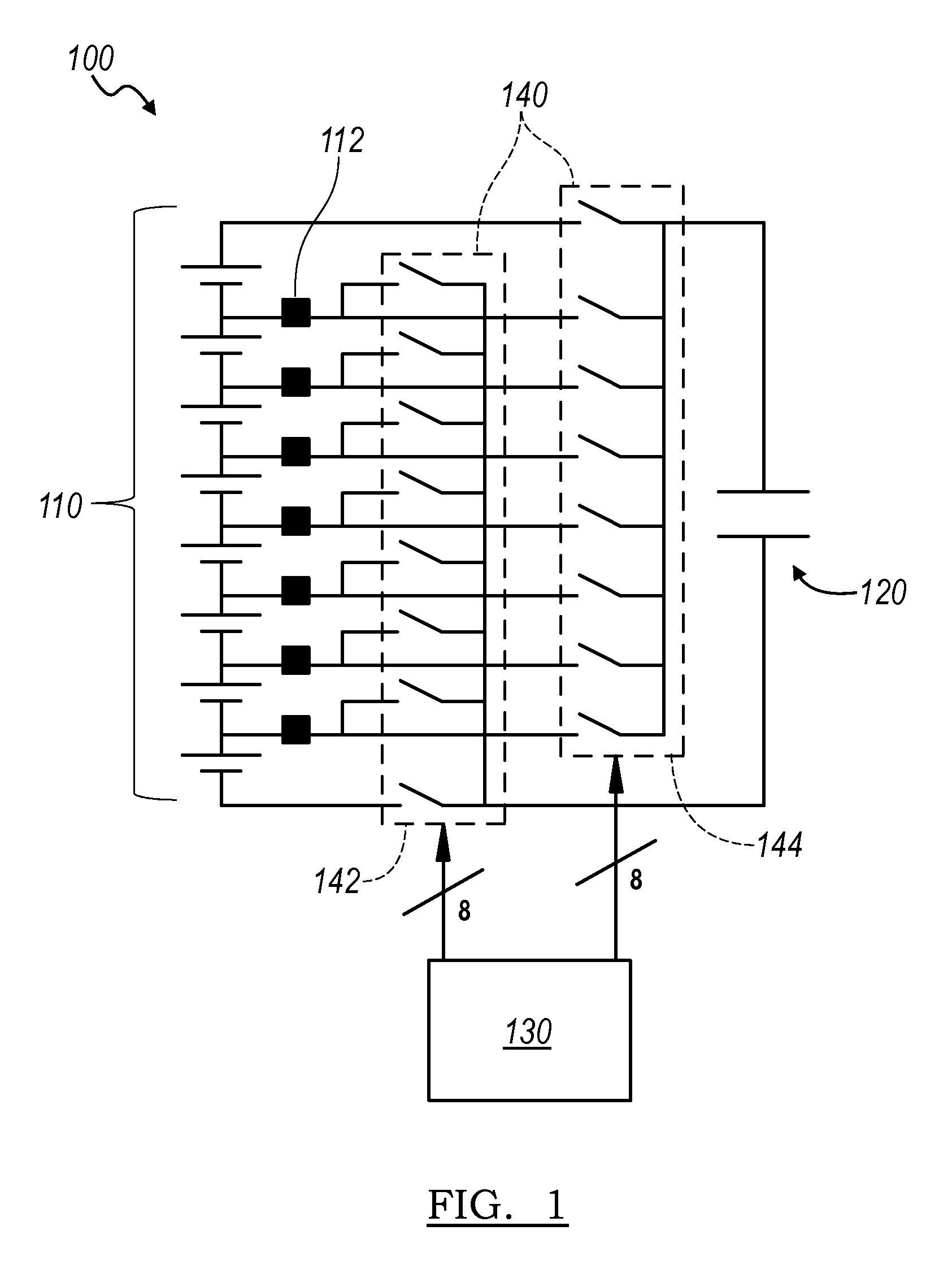System and method for balancing charge within a battery pack
a technology of charge balancing and battery pack, applied in adaptive control, process and machine control, instruments, etc., can solve the problems of increased chance of battery pack failure, waste of extra charge through resistors, and failure of battery packs, so as to increase the initial charge rate of capacitors, increase the voltage potential, and speed up the speed of charge balancing
- Summary
- Abstract
- Description
- Claims
- Application Information
AI Technical Summary
Benefits of technology
Problems solved by technology
Method used
Image
Examples
Embodiment Construction
[0018]The following description of the preferred embodiments of the invention is not intended to limit the invention to these preferred embodiments, but rather to enable any person skilled in the art to make and use this invention.
1. System for Balancing Charge
[0019]As shown in FIGS. 1 and 2, the system 100 of the preferred embodiments for balancing charge within a battery pack with a plurality of cells 110 connected in series includes a capacitor 120, a processor 130 that is configured to select a combination of donor cells 114 and receiver cells 116 from the plurality of cells 110 in one of following two modes: a first mode where the number of donor cells is equal to the number of receiver cells and a second mode where the number of donor cells is greater than the number of receiver cells, and a plurality of switches 140 that electrically couple the capacitor 120 to the donor cells 114 to charge the capacitor 120 and electrically couple the capacitor to the receiver cells 116 to d...
PUM
 Login to View More
Login to View More Abstract
Description
Claims
Application Information
 Login to View More
Login to View More - R&D
- Intellectual Property
- Life Sciences
- Materials
- Tech Scout
- Unparalleled Data Quality
- Higher Quality Content
- 60% Fewer Hallucinations
Browse by: Latest US Patents, China's latest patents, Technical Efficacy Thesaurus, Application Domain, Technology Topic, Popular Technical Reports.
© 2025 PatSnap. All rights reserved.Legal|Privacy policy|Modern Slavery Act Transparency Statement|Sitemap|About US| Contact US: help@patsnap.com



